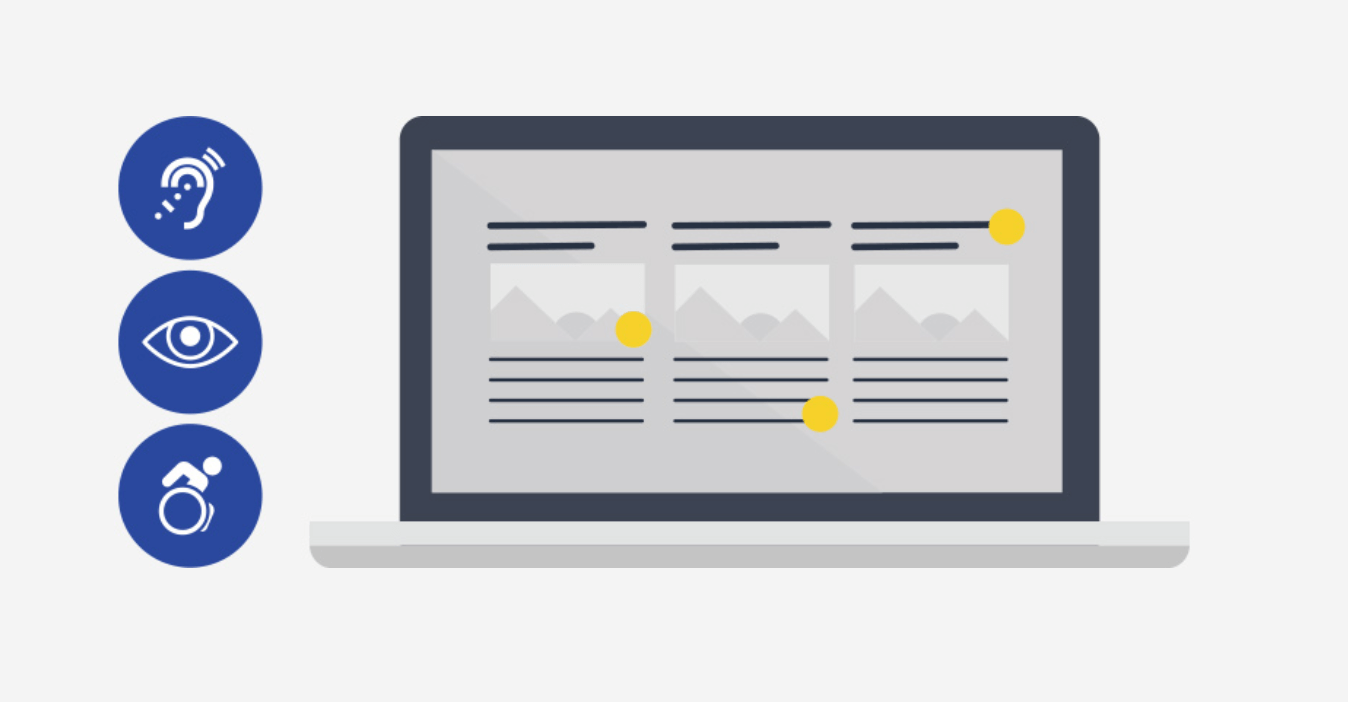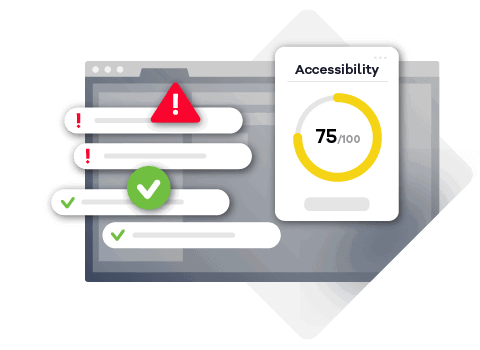ADA Compliance Website Checker
Use Siteimprove’s Accessibility Checker to find out if your website complies with the US Americans with Disabilities Act (ADA). Siteimprove provides automated accessibility testing that strictly adheres to ADA standards, so you can quickly and easily identify and fix accessibility issues that discriminate against users with disabilities, in violation of Title III of the ADA.
Why does your website need to be ADA compliant?
When it comes to the where the ADA stands on digital accessibility, it’s safe to say, “It’s complicated.”
Let’s start by differentiating between public and private organizations.
Title II of the ADA requires that the services, programs, and activities of state and local governments have to make sure that their services, programs, and activities are accessible to people with disabilities, including when offered online or through mobile apps.
In April 2024, Title II was updated with clarification regarding what is meant by “compliance: The proposed standard is WCAG 2.1 Level A & AA, for both web content and mobile apps.
Title III of the ADA requires that every owner, lessor, or operator of a “place of public accommodation” (generally private organizations) furnish equal access to users who meet ADA standards for disability.
But from a legal standpoint, it’s still a bit foggy with respect to Title III and digital accessibility. That doesn’t mean we’re without guidance: Accessibility experts anticipate that the technical criteria applied to Title II will be applied to Title II, meaning that private organizations must also meet WCAG 2.1 Level AA guidelines with respect to both mobile apps and web content.
The TL;DR version: If you’re a private entity, observe WCAG 2.1 Level AA, just as government entities do. You’re going to have to do so sooner or later, and it’s best to be ahead of the game.
Who is covered by the Americans with Disabilities Act?
There are different types of disabilities to consider when designing accessible websites:
- Blindness and low vision
- Deafness and hearing loss
- Limited movement
- Speech disabilities
- Neurological limitations (e.g., Alzheimer's, Parkinson’s, etc.)
- Cognitive limitations (e.g., learning disabilities)
When building an ADA compliant website, you can rely on a range of design and web development practices that help people with disabilities navigate the site.
For example, by ensuring sufficient color contrast between the text and background colors on your site, you make it easier for those with low vision to read the text.

Benefits of having a website ADA compliant
Users with disabilities are an under-served segment
Worldwide, people with disabilities represent a large minority: By some estimates, an estimated 1.3 million people experience significant disability — about 16 percent of the world population.
Yet this group is underserved in any number of ways, including poor physical access to workplaces and public spaces, communication barriers, and discrimination.
The good news is disability policy is being pushed into the spotlight, and consumer brands are increasingly recognizing this enormous market segment.
Savvy brands recognize that those 1.3 billion people and their families have a spending power of more than $13 trillion, and if they find themselves in a situation — physical or digital — that limits their access, they might not return.
If your website isn’t accessible, you’re excluding a significant percentage of the global population. This not only threatens disabled people’s rights to the same opportunities as abled people, but also has consequences for your business.
User Experience
It’s no secret that user Experience (UX) and customer experience (CX) are top factors when it comes to retaining online customers. As websites get faster and better, customers have higher expectations than ever: They’ve been primed by Amazon, Netflix, Twitter, and YouTube to expect a frictionless experience.
Brand leaders know that any edge in experience can drive growth; that’s why forward-thinking brands like Apple, Google, Microsoft make digital accessibility a core priority.
By making digital accessibility a foundational principle for all its marketing from the start, your organization can build a next-generation user experience that stands out from the crowd with simplicity and ease-of-use that appeals to all consumer demographics.
Search Engine Optimization
When you optimize your website to be accessible, you can reap numerous of SEO benefits. The goal of an accessible website is to deliver the same information to your audience, regardless of ability.
SEO works hand in glove with digital accessibility: Search engines reward accessible websites that optimize features like header tags, video transcriptions, image alt text, descriptive link text, broken links, navigation structured content, etc.
How to check your website for ADA compliance
Ensure all users enjoy full and equal access to your website by using the Siteimprove ADA compliance Website Checker to test any page on your website for Web Accessibility.
Simply add the URL for the page you want to check to:
- Receive an email detailing your results to share with your team
- View your unique website accessibility score
- See an overview of your page’s accessibility – with 15 common accessibility issues checked
- Get a clear explanation of each accessibility issue on the page
